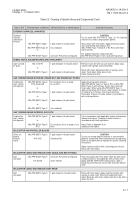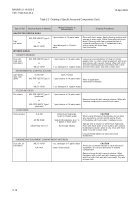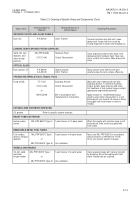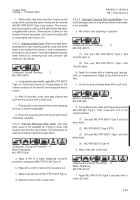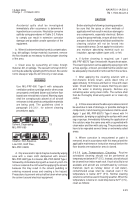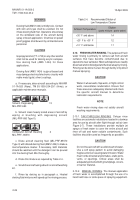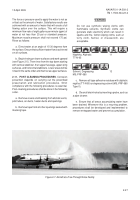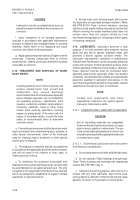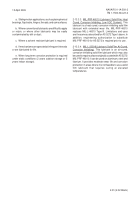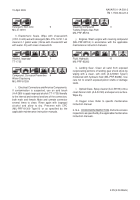TM-1-1500-344-23-2 - Page 51 of 240
2-27
NAVAIR 01-1A-509-2
TM 1-1500-344-23-2
15 April 2009
The force or pressure used to apply the water is not as
critical as the amount of water. Satisfactory results are
achieved with an amount of water that will create a full
flowing action over the surface. This will require a
minimum flow rate of eight gallons per minute (gpm) of
water at not less than 25 psi or standard pressure.
Maximum nozzle pressure shall not exceed 175 psi.
Rinse as follows:
a. Direct water at an angle of 15-30 degrees from
the surface. Ensure that sufficient water flow is achieved
on all surfaces.
b. Begin rinsing on lower surfaces and work upward
(see Figure 2-5). Then rinse from the top down starting
with vertical stabilizer, then upper fuselage, upper wing
surfaces, and horizontal stabilizers. Lower areas will be
rinsed in the same order and manner as upper surfaces.
2-11. POST CLEANING PROCEDURES
. Corrosion
prevention depends on carrying out the prescribed
preservation and lubrication procedures. Strict
compliance with the following procedures is essential.
Post-cleaning procedures shall be done in the following
order.
a. Remove covers and masking from all static vents,
pitot tubes, air ducts, heater ducts and openings.
b. Remove tape from all other openings sealed with
masking tape.
WARNING
Do not use synthetic wiping cloths with
flammable solvents. Synthetic cloths can
generate static electricity which can result in
sparks and fire. Cotton wiping cloths, such at
terry cloth, flannel, or cheesecloth, are
acceptable.
Naphtha, Aliphatic
11
TT-N-95
Solvent, Degreasing
13
MIL-PRF-680
c. Remove all tape adhesive residues with aliphatic
naptha (TT-N-95) or degreasing solvent (MIL-PRF-680
Type II).
d. Clean all drain holes by inserting a probe, such as
a pipe cleaner.
e. Ensure that all areas accumulating water have
been drained. Whenever this is a recurring problem,
procedures shall be developed and implemented to
remove entrapped water and prevent accumulation.
Figure 2-7. Aircraft at a Taxi-Through Rinse Facility
Back to Top

